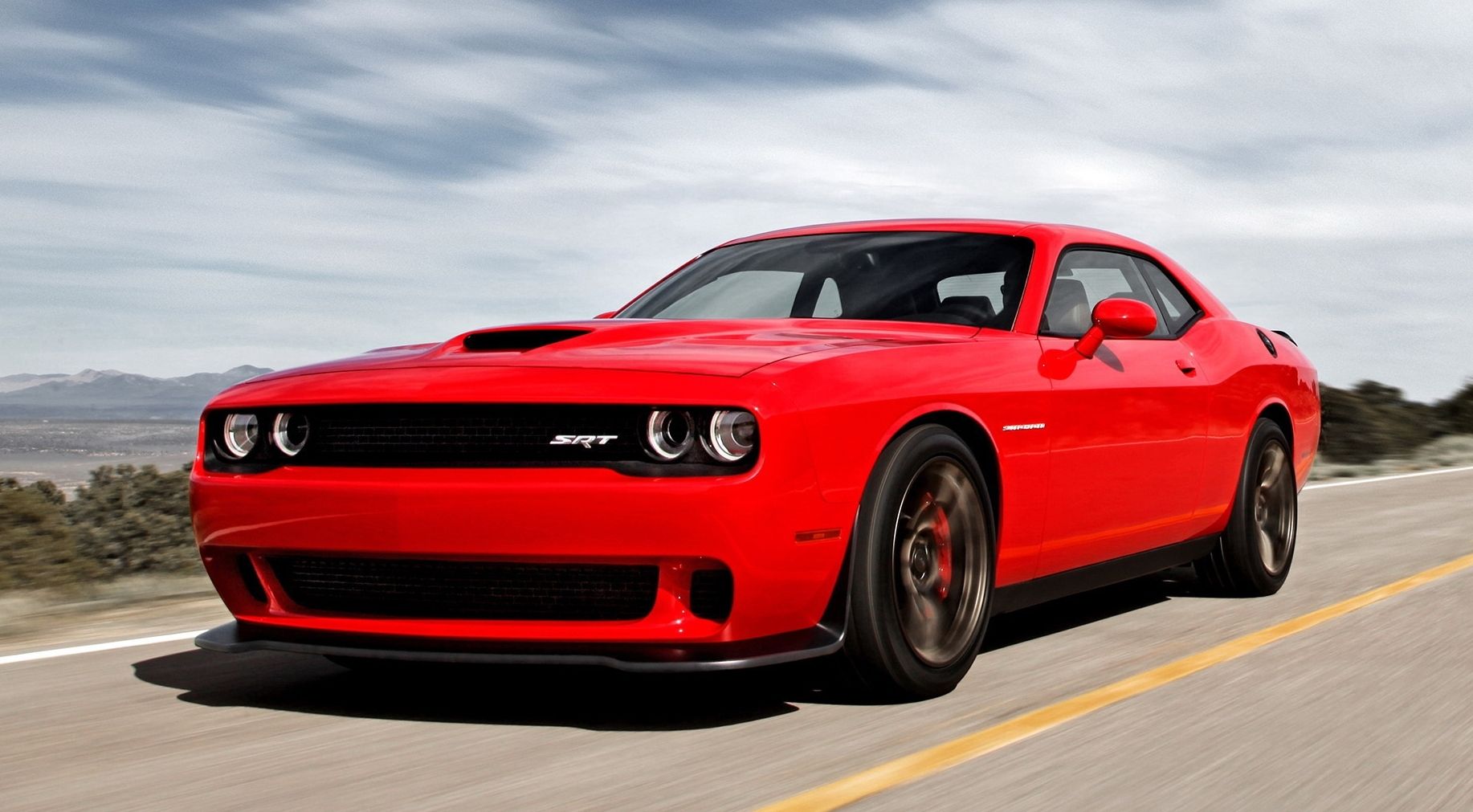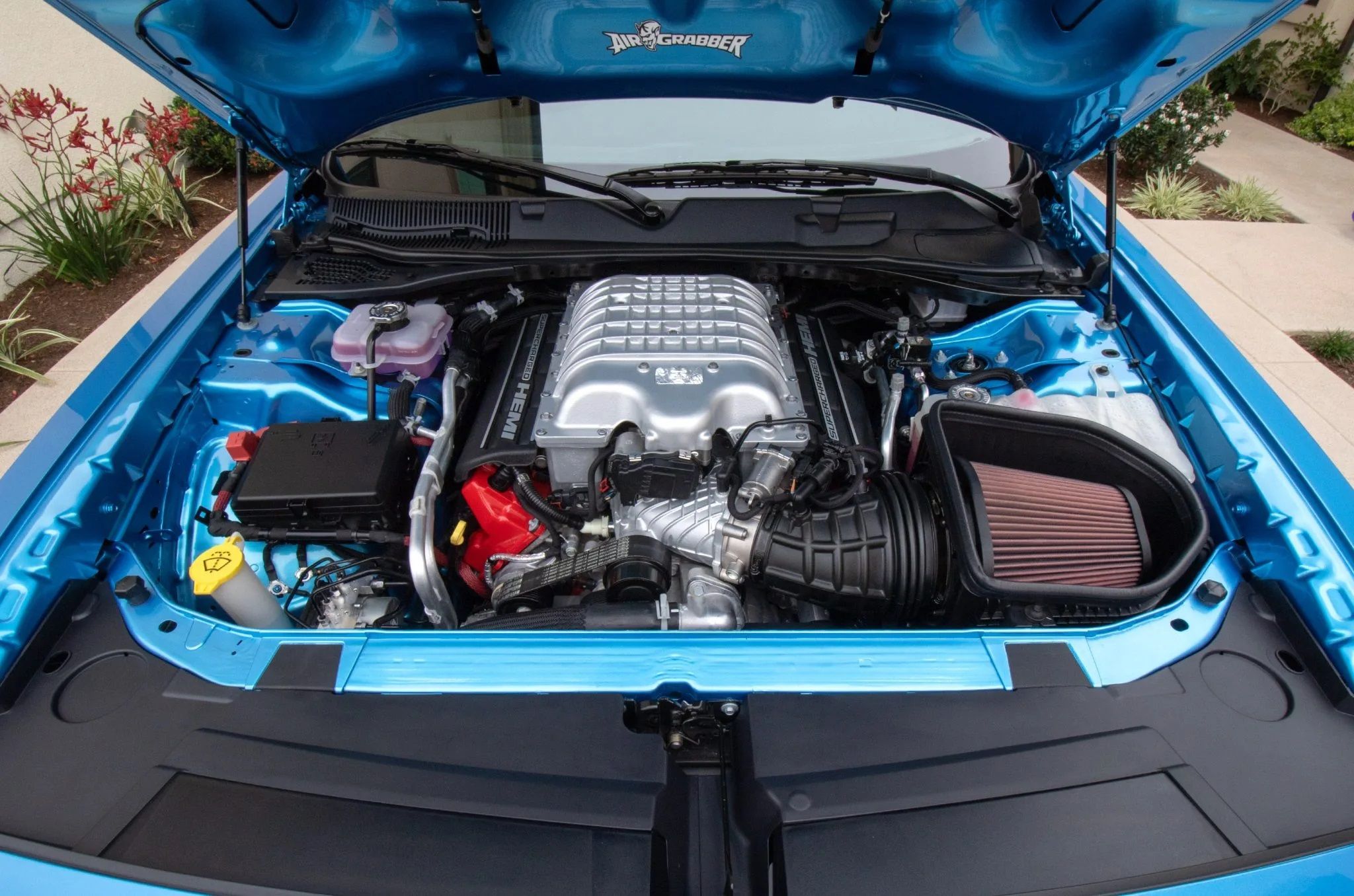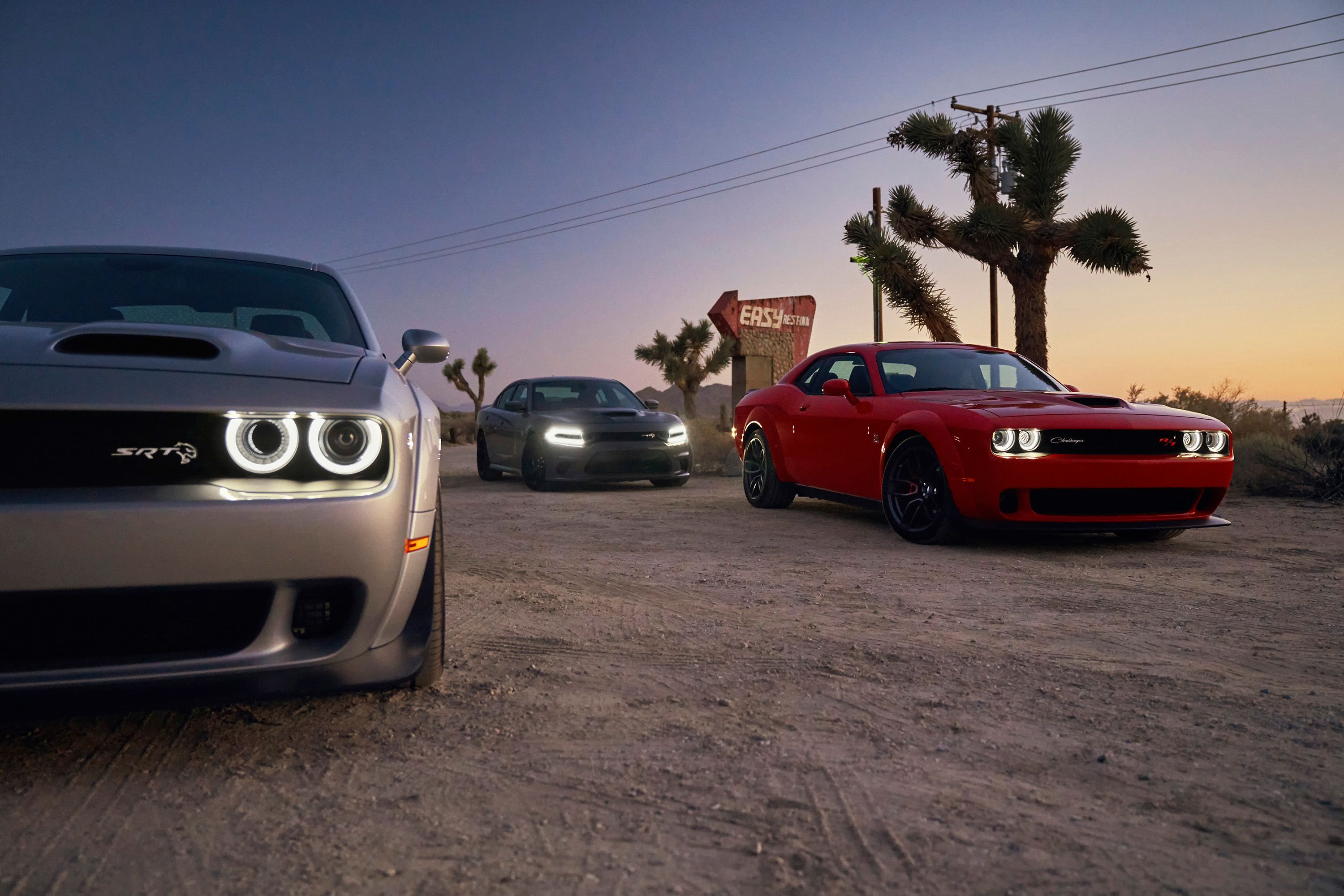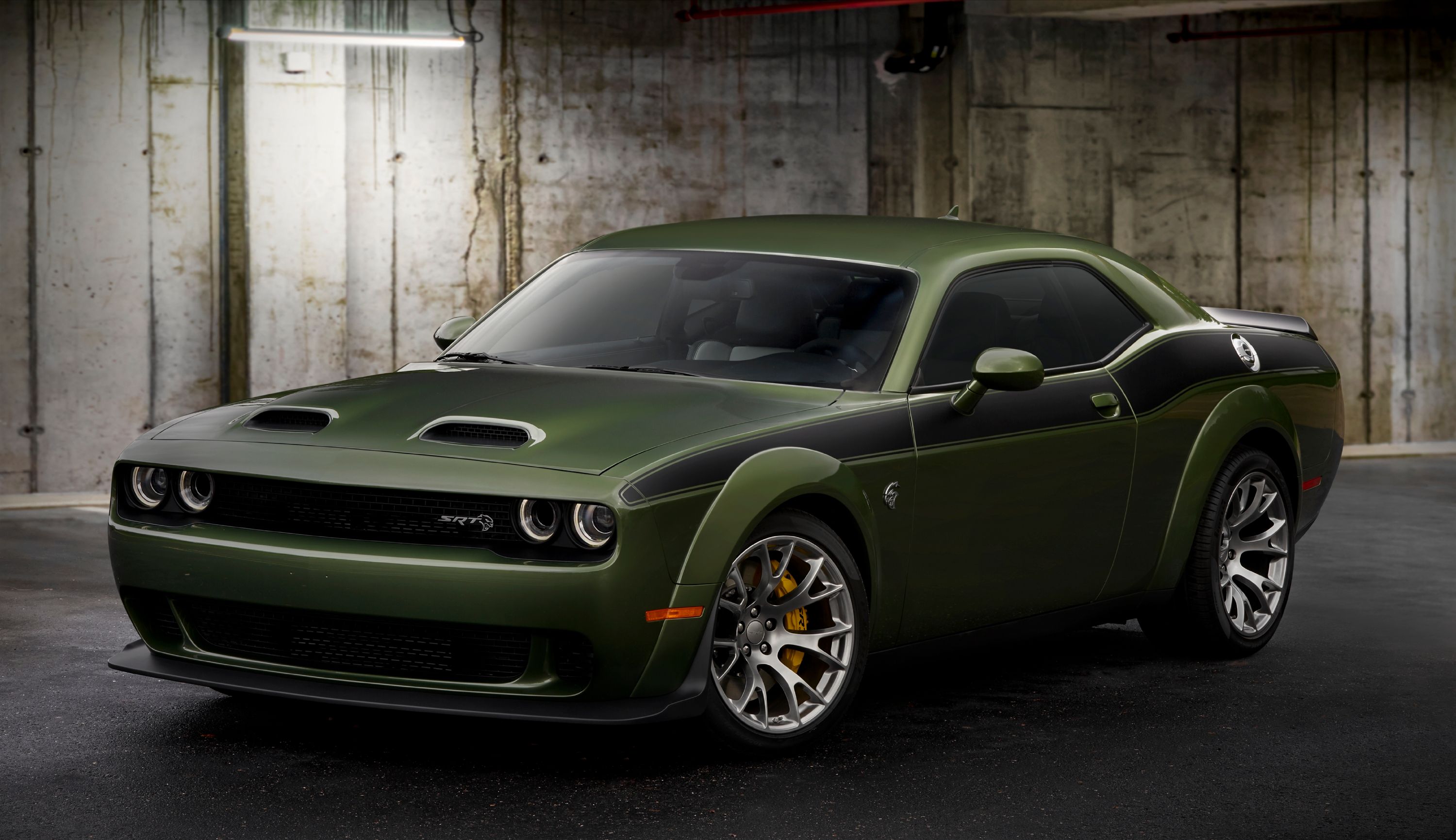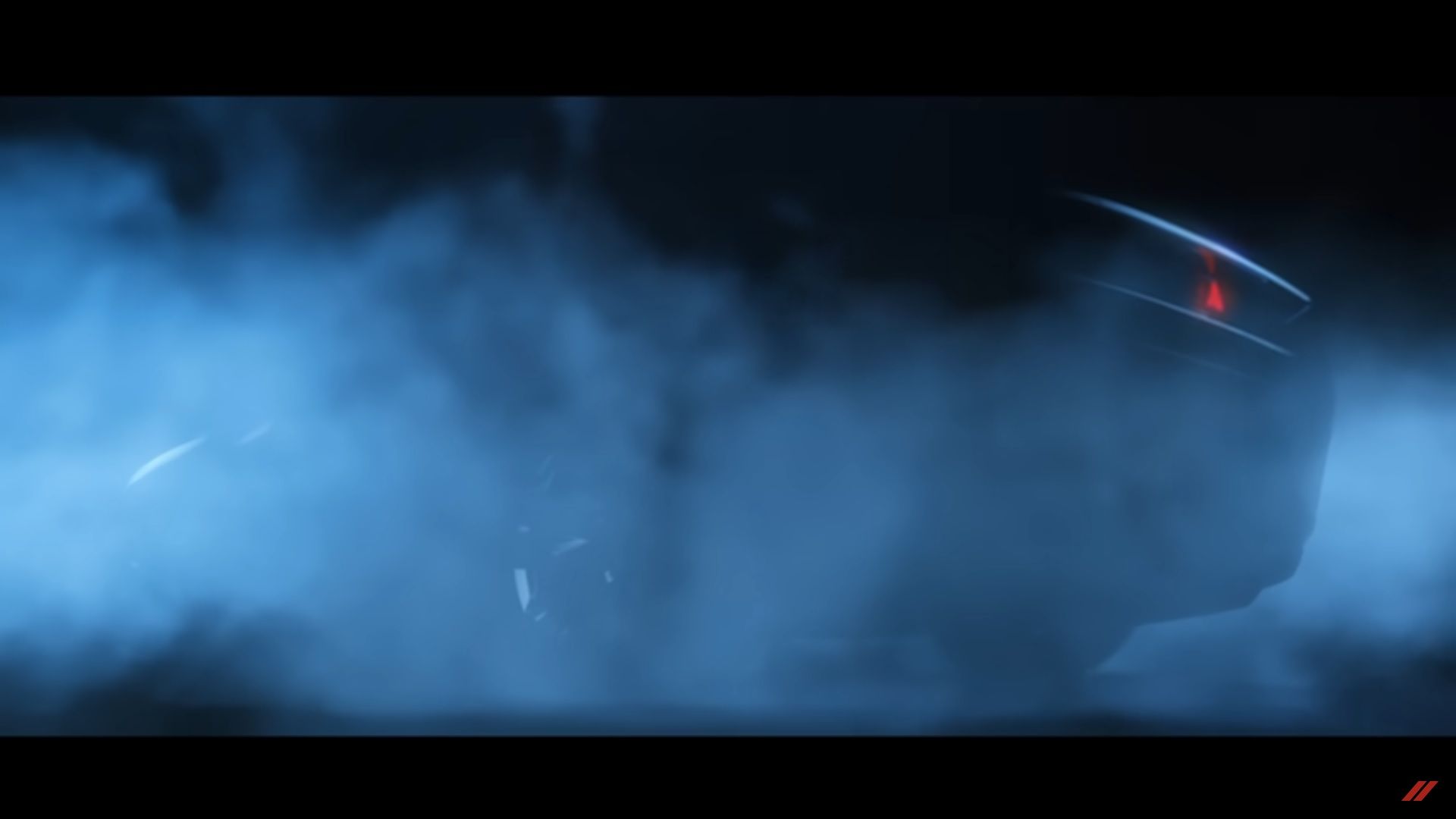Dodge has always been the odd one out of the big three. Since its inception, the Dodge brothers aimed to break the status quo and set the rulebook on fire. Although Dodge is about to give us the first-ever, EV Muscle car, the big, pushrod V-8 is still around. The Hellcat, in particular, was the first factory Muscle car to jump the 700 horsepower mark and was borderline absurd when it came out in 2014. With that said, the Hellcat spawned other, even more, powerful cars and it’s crazy when you think that the 717-horsepower Hellcat is the baby of Dodge’s supercharged lineup.
An engine name that was cool enough to put on a car
If you are a MOPAR fan you probably know that Hellcat is actually the name of the engine. Until 2015, the most powerful version of the Challenger and Charger models was the SRT8, which was later renamed the SRT 392. The Hellcat engine was based on the 6.4-liter (392) Hemi V-8, of which 90 percent was replaced. The engine was de-stroked to 6.2 liters, received forged internals, and a 2.4-liter IHI, twin-scroll supercharger generating 11.6 psi (0.8 bar).
The engine was actually dynoed at 669 rear wheel horsepower and 606 pound-feet, which after adjusting for drivetrain loss comes up to more than the Hellcat’s initial rating of 707 horsepower (520 kilowatts) and 650 pond-feet (881 Nm). In 2018, those numbers went up to 717 horsepower (527 kilowatts) and 656 pound-feet (890 Nm). In 2019, the Widebody package was introduced for both the Challenger and Charger models.
Then came the Demon
For the 2018 model year, Dodge brought out the SRT Demon. Based on the Challenger Hellcat, it received a bigger, 2.7-liter supercharger and shaved 215 pounds (98 kg) of weight. With 100-octane fuel, the SRT Demon produced 840 horsepower (626 kilowatts) and 770 pound-feet (1,044 Nm). The SRT Demon was designed with one goal in mind – to dominate the dragstrip. With a 2.3-second time to 60 mph (97 km/h) and 9.65 seconds at over 140 mph (225 km/h) for the quarter-mile, the Demon was the quickest non-electric, factory car. It could also do a wheelie.
We can’t talk about the Dodge SRT Demon without mentioning the Demon crate. It cost $1 and provides a plethora of parts and accessories, dedicated to transforming the Demon from a streetcar to a nine-second drag beast. It comes with a Powertrain control module (PCM) from Dodge’s Direct Connection program, skinny tires for the front, a high-flow air filter, a high-octane racing fuel switch bank, and more.
The Hellcat Redeye
After the Dodge Challenger SRT Demon was discontinued, Dodge introduced the Hellcat Redeye. Unlike the Demon, which was based solely on the Challenger Hellcat, both the Challenger and Charger received the Redeye treatment. The Hellcat Redeye, essentially, got the Demon engine, which in this case, was restricted due to a smaller air intake on the hood. It was rated at 797 horsepower (594 kilowatts) and 707 pound-feet (959 Nm).
Various drivetrain components were beefed up, including the Torqueflite (ZF), an eight-speed automatic. The Redeye also received a more track-focused suspension setup compared to the standard Hellcat. The Charger and Challenger Hellcat Redeye models came exclusively with the widebody package, which added 3.3 and 3.5 inches (83.8 and 88.9 mm) of width respectively. The widebody package also included 11x20-inch Forged wheels, Bilstein adaptive suspension, upgraded Brembo brakes, and stiffer anti-roll bars, to name a few.
Time for a Jailbreak
In late 2021, Dodge introduced a special edition of the already special Hellcat Redeye, called the Jailbreak. The model was introduced as part of Dodge’s “Never lift” campaign, which also brings back the Direct Connection performance program. The Jailbreak package brings a variety of special colors and costs just $995. More importantly, it adds 10 horsepower to the Hellcat Redeye, bringing the supercharged V-8 back to Demon power levels (on pump gas). The Jailbreak package is offered on both the Challenger and Charger Hellcat Redeye models.
What’s next?
Despite Dodge preparing to unveil the first EV Muscle car and ax the Hellcat as we know it, the supercharged V-8 will still be around. While the last Hellcat is expected to be officially unveiled later this month at Dodge’s Speed Week, we now know that it will be a send-off for the current platform that has been used for well over a decade. According to the latest reports, Dodge will continue to offer high-performance, supercharged V-8 models, alongside its EV Muscle car, but on an all-new platform, likely provided by Stellantis.
The story of the Dodge Hellcat began in 2015, which in car time, is a long time. Seven years later, this dinosaur of a V-8 along with the aging Mercedes platform that dates back to the W211 E-Class, is still a sought-after package, and we have the Hellcat to thank for that. With that said, the Challenger and by extension the Charger are Muscle cars down to the bone. While later iterations have become slightly more refined and even track-focused, it is the "base" version that stayed true to its American Muscle car roots.

